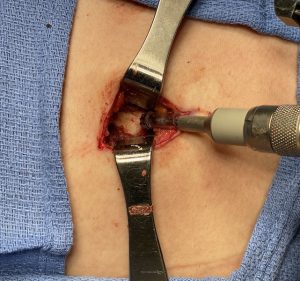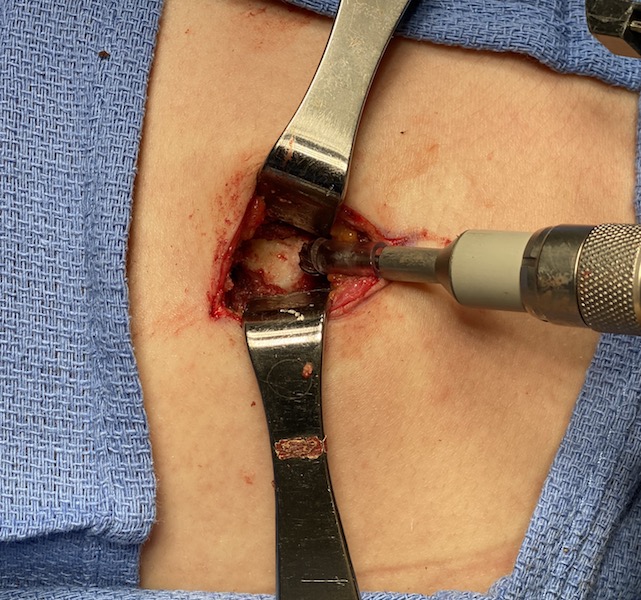The ribs are comprised of 12 pairs, all of which have a bony and cartilage component. The ratio of cartilage to bone depends on what rib it is and whether it attaches to the sternum or not. The first ten ribs do attach to the sternum and have varying cartilages in those attachments as it descend higher in number. The higher the rib number the more cartilage that exists along its length, with the exception of ribs 9 and 10.
The largest amount of cartilage in ribs is evident in the subcostal rib margins where the confluence of ribs 7 through 10 meet to create the anterior lower ribcage. This is also a ribcage area that is frequently exposed to trauma in which dislocation injuries can occur in which variable amounts of separation of the costochondral junction can occur. These junctional disruptions can result in prominences over the disrupted bone-cartilage area that may or may not result in residual discomfort as well.


Spot burring reduction of prominent rib dislocations can be effectively done whether it is cartilage or bone. Keeping the incision small, particularly when the reason for the reduction is aesthetic in intent, is an important part of the procedure.
Dr. Barry Eppley
Indianapolis, Indiana



